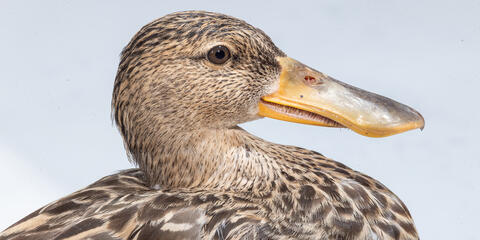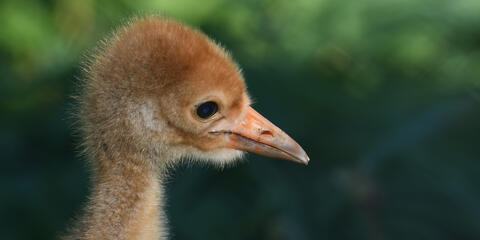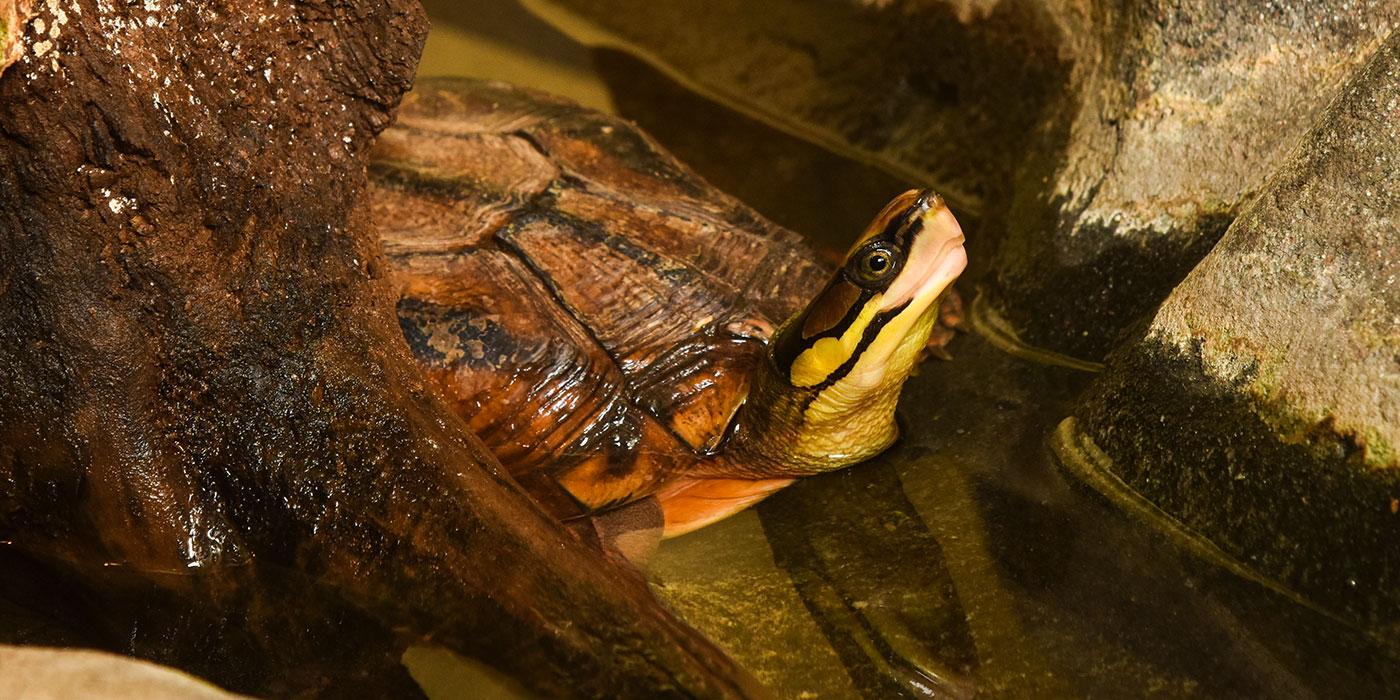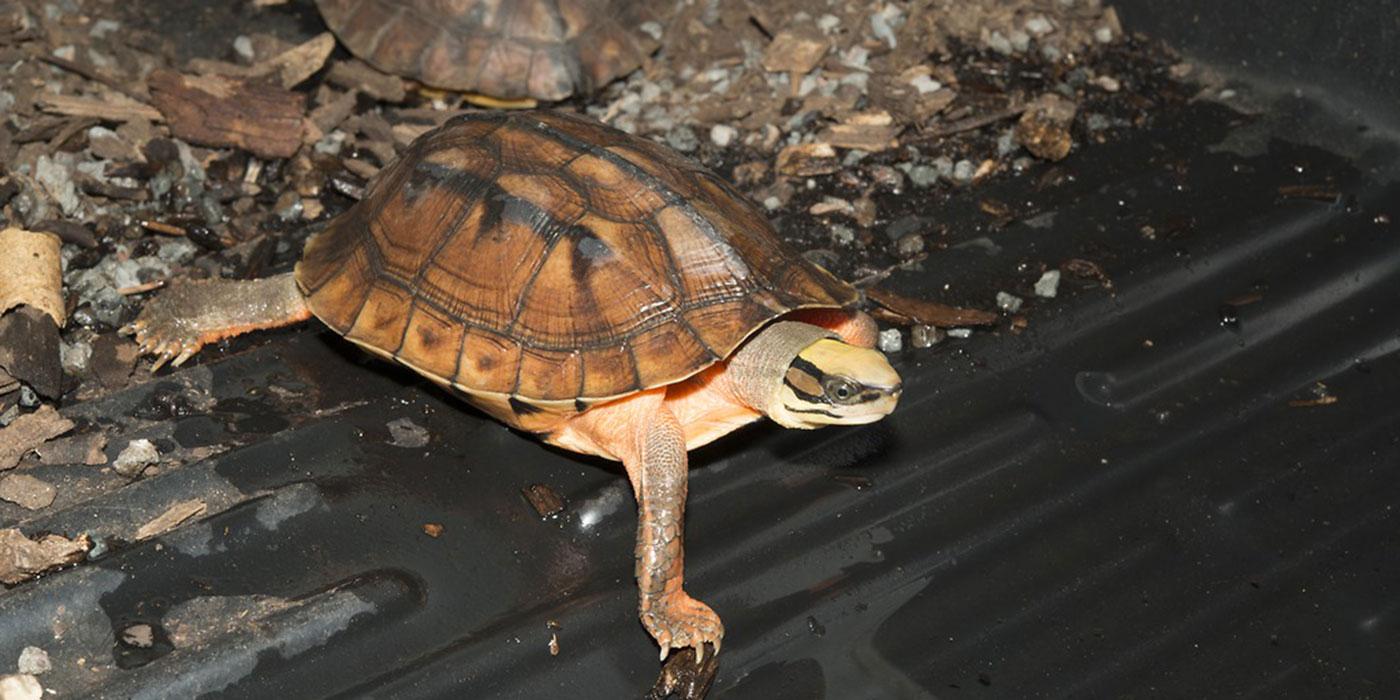Physical Description
This turtle's brown carapace has three longitudinal black stripes, giving the species its common name. Chinese three-striped box turtles can have a variety of colors. The head is often golden-yellow to olive-green on the top with a brown, yellow or orange patch behind the eyes; the jaws are yellow and the neck is pink or orange. Males have indented plastrons and a thicker tail. The plastron is hinged, so the turtles can retreat inside their shells.
Size
Its shell grows 7-12 inches (20-32 centimeters), depending on the individual.
Native Habitat
Chinese three-striped box turtles are a semi-aquatic species found in both aquatic and terrestrial habitats. They were once found in low- to mid-elevation forests of the southern Chinese provinces of Fujian, Hong Kong, Guandong, Hainan Island, and Guangxi, as well as northern Vietnam, Laos, and Myanmar. Now, they are only known to exist in Hong Kong.
Their natural habitat includes streams and stream banks, often at high elevations. Based on observations in zoos, it is believed that Chinese three-striped box turtles spend a significant amount of time on land.
Lifespan
This turtle's lifespan in human care is about 30 years.
Food/Eating Habits
These turtles are omnivorous and eat a variety of foods, including worms, frogs, crabs, fruits, vegetation and carrion.
At the Smithsonian's National Zoo, they primarily eat greens as well as some proteins, including crickets and earthworms. Occasionally, they also eat vegetables and fruit.
Reproduction and Development
According to commercial farmers on Hainan Island, China, females can produce eggs once they weigh about 2 pounds (0.75-1 kilograms). They breed both in and out of water. Males can be very aggressive while mating. Females lay two to six eggs during the nesting season, which usually happens in May, and incubation lasts 80-85 days.
Conservation Efforts
Three-striped box turtles rank ninth on the list of top 25 endangered tortoises and freshwater turtles. They are virtually extinct in the wild due to over-collection for food and medicine markets in Asia. Although there is no scientific evidence to support this, the plastron is perceived to have medicinal properties that can cure cancer.
These turtles are also becoming popular in the pet trade. There are many farms in China that raise Chinese three-striped box turtles. However, these farm-raised animals do not relieve pressures on wild populations. Many of the farmed turtles are hybrids, and these populations have a disproportionate amount of females. As a result, the farm-raised turtles are not as financially rewarding in the sale of exotic pets. A wild-caught male can worth between $20,000 and $30,000, whereas a farm-raised turtle would be sold for less.
An international coalition of organizations is now breeding genetically pure groups of these turtles as assurance colonies. In 2013, a breeding center in California was able to send five young turtles to Hong Kong in order to increase the genetic diversity of their breeding population. This marked the first time that a three-striped box turtle bred in the U.S. was able to return to its country of origin.
Many nature reserves are also being created, and Chinese three-striped box turtles are protected by law in Hong Kong. Without these increased efforts, survival of this species in the wild is doubtful.
Help this Species
- Practice ecotourism by being an advocate for the environment when you’re on vacation. During your travels, support, visit or volunteer with organizations that protect wildlife. Shop smart too! Avoid buying products made from animals, which could support poaching and the illegal wildlife trade.
- Choose your pets wisely, and do your research before bringing an animal home. Exotic animals don’t always make great pets. Many require special care and live for a long time. Tropical reptiles and small mammals are often traded internationally and may be victims of the illegal pet trade. Never release animals that have been kept as pets into the wild.
- Support organizations like the Smithsonian’s National Zoo and Conservation Biology Institute that research better ways to protect and care for this animal and other endangered species. Consider donating your time, money or goods.
- Share the story of this animal with others. Simply raising awareness about this species can contribute to its overall protection.
Animal News

Historic Hatching: Northern Shoveler Ducklings




